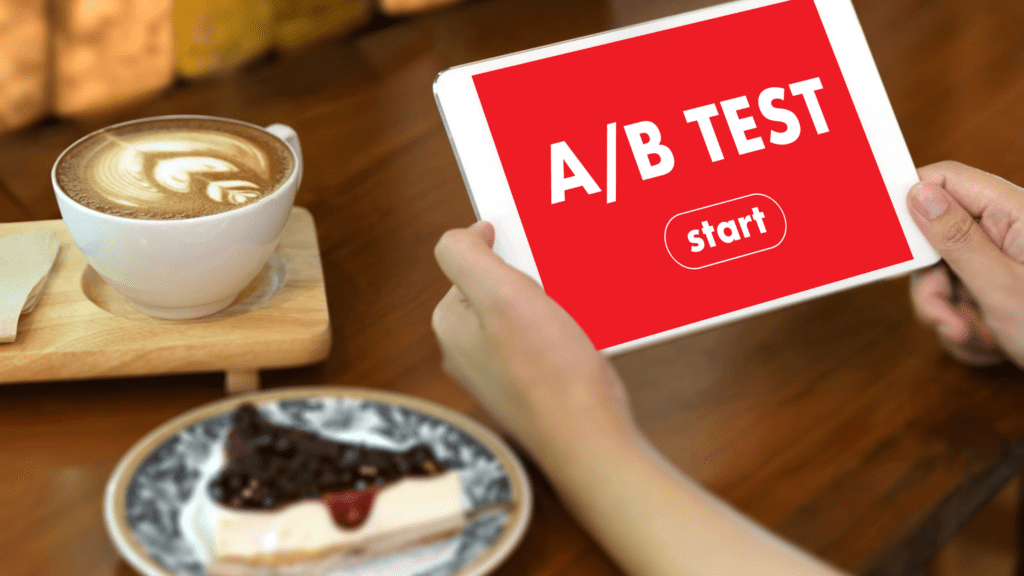In this article, we will look at various professional SMART goals examples. This will help you better understand the SMART goal framework and how managers and leaders can create their own objectives.
To boost employee performance, managers and leaders must have clear objectives for themselves as well as for assisting others in achieving their own objectives.
A SMART goal is an effective tool that helps you to monitor your progress toward attaining your key performance indicators regularly.
Components Of A SMART Goal
S – Specific
A SMART goal’s first step is to be specific, as seen in the first letter of the acronym. A particular goal outlines explicit expectations or methods to accomplish that goal. It doesn’t result in a hazy objective or the possibility of misunderstanding.
Example of a specific goal: Hire four new call center agents per month in order to achieve a 20% workforce increase in the upcoming fiscal year.
Nonspecific goal: Expand the workforce.
M – Measurable
The SMART goal must also have a quantifiable aim as one of its components. Without meaningful benchmarks to strive for, the objective will lack direction and won’t have a clear indication that the intended outcome has been reached.
Example of measurable goal: Raise the customer satisfaction rating on repeat orders by 15%.
Non-measurable goal: To provide better customer support
A – Achievable
The objective must also be reachable or achievable. It’s fine to have great dreams and push limits, but be mindful of going too far; setting an impossible goal would only lead to disappointment.
Example of an attainable SMART goal: Increase sales by 5% annually in the following 5 years.
Unachievable goal: Increase sales by 100% yearly in the following 20 years.
R – Relevant
The strategy you outline for your SMART goal should be relevant to what you’re attempting to accomplish. Setting vague expectations can be confusing for senior staff and managers, and it might give the impression that the end goal would never be achieved. In order to prevent having a negative effect on staff morale and to make sure that the objective is within the control of the employees, it must also be a realistic goal.
Example of a realistic SMART goal: Incorporate all paper trails into the new process before the end of the year in order to comply with the requirements for electronic filing.
Unrealistic goal: To double revenue within a week by changing the customer filing process.
T – Time-bound
The last SMART component for the goal is for it to be time-bound or easily trackable over a certain amount of time. Here, there is a clear sense of development from start to finish. Without a time limit, working towards achieving a goal could carry on indefinitely without actually getting it accomplished.
Example of a time-bound goal: To improve work performance rating from Average to Good within 1 year.
Time independent goal: To perform better at the job.
Professional SMART Goals Examples

1. Enhance Employee Relations – SMART Goal For Employee Engagement
Over the course of the next month, I will have 1-on-1 meetings with every one of my 20 team members to get to know them better.
S – The objective is to learn more about the staff.
M – The quantifiable objective is the 1-on-1 meeting throughout the month.
A Minimum of 1 meeting can be handled by the manager each day.
R – Getting to know your staff through the meetings is a terrific idea.
T – The time period is one month.
2. Quarterly Staff Meetings – Productivity SMART Goal Example
Before the end of the fiscal quarter, I’ll cut back on team meetings in an effort to increase performance. We will conduct just one whole-team meeting per week as opposed to three, and sub-groups will only need to meet two times per month as opposed to once every week.
S – By holding fewer staff meetings, redundancies are to be eliminated.
M – There will be one fewer staff meeting per week and the number of group meetings will get reduced by half.
A – Since a time slot is being eliminated, these improvements are easy to implement.
R – Less redundancy should result from taking these actions.
T – After a quarter, the management should be able to determine whether the approach was successful in achieving the objective.
3. Keep The Accreditation Status
By designating 5 team members to comprehensively analyze the standards and report on necessary changes every 3 months, we will effectively maintain the accreditation upon the review team’s site visit the following year.
S – The company’s goal is to keep its level of accreditation.
M – The quantifiable output is the quarterly reports with recommendations.
A – With their current workload, a 5-person team is capable of completing these reports.
R – Everyone should work to keep their accreditation by following the suggestion reports.
T – The “deadline” is the review team’s visit the following year.
4. Enhancing Customer Response Time – SMART Goal For Customer Service
By hosting a weekly team meeting to prepare everyone for the forthcoming service calls, I will collaborate with the team to reduce the typical wait time for a call by 20% during the next 6 months.
S – A shorter response time for service calls is the objective.
M – A 20% reduction over a 6-month period is the intended target.
A – While 20% might seem a bit aggressive, it is feasible.
R – Everyone will handle the customer calls more swiftly with the help of the weekly team meetings.
T – The target time frame for reducing the typical response time is six months.
5. New Email Signups For Updates

By conducting A/B tests on the various email campaigns for the mailing lists, we will expand our overall email readership by 5% year over year. We will then evaluate the effectiveness of each message monthly during the content review meeting.
S – The objective is to boost email list signups.
M – Running A/B tests on email campaigns, together with content review sessions, is the measurable action.
A – Asking the team for 1 more monthly meeting is not unreasonable.
R – More people should subscribe if they find the content relevant.
T – A clear indication is provided by the annual review process.
6. Performance Evaluations
I will conduct 8 interview sessions every week and allocate an extra 2 hours per week to compile the necessary paperwork in order to complete all performance reviews for my department within the allocated 6-week time frame.
S – The objective is to finish staff performance evaluations.
M – 8 interview sessions and 2 hours of paperwork are planned for each week.
A – Typical business schedule allows for 8 possible 1-on-1 interviews every week.
R – Completion of the goal is possible by conducting the interviews.
T – Based on the department’s overall size, 8 interviews a week would result in 48 interviews. This should make it possible to achieve the objective by the deadline of 6 weeks.
7. Maintain A Higher Rating
By having more store cleanings and checks for food stock to correspond with the industry best practices — every 90 minutes instead of every 2 hours — we will maintain our A+ quality rating for the upcoming year.
S – The main goal is to keep the rating at A+.
M – Increasing the number of stock checks and store cleanings are quantifiable actions.
A – The staff can handle the increased number of cleaning inspections.
R – A slight increase in the cleaning inspections will be enough to maintain, if not raise, the current level of cleanliness.
T – The ultimate goal is to maintain a higher rating before the next year.
8. Include New Products In R&D – SMART Goal Example For Business
By introducing 4 new products to the development team this year, we will successfully release a new flagship product within 2 years.
S – The objective is to introduce a brand-new exclusive product.
M – The measurable step is adding 4 products for development.
A – It’s feasible to release 4 new products during the year.
R – It is fair to think that one of the 4 items will eventually be released.
T – The first timeline is for the R&D objective, while the second is for the launch.
9. Sales Objective

With the help of a weekly online campaign, a monthly internal contest, and a quarterly incentive promotion for all members to track their individual sales objectives, we will raise our department’s sales by 10% the next year.
S – A 10% rise in sales is the target.
M – The weekly campaign, monthly contest, and quarterly program are the quantifiable actions.
A – The team is capable of completing these tasks.
R – These initiatives and campaigns should be able to boost sales and revenue.
T – The objective is to achieve this by the next year.
10. Onboarding New Employees
By collaborating with the HR team during the next 2 months to develop a 10-session program that includes all the key areas a new employee should be familiar with, we will standardize our new employee onboarding procedure.
S – The objective is to make employee onboarding standardized.
M – The main result is a program comprised of 10 sessions.
A – The allocated two months is reasonable to build this program.
R – By following the plan, this objective can be attained.
T – The preferred time frame is 2 months.
11. Quality Assurance
Including an additional check to the review procedure, which will involve 1 designated team member providing final clearance after each version is released daily, will increase our department’s quality assurance ratings by 20% over the following 3 months.
S – A 20% increase in the quality assurance rating is the target.
M – The measurable activity is assigning a team member to do final checks.
A – One designated team member per day should not add significantly to the workload of any one employee and would also serve as a worthwhile individual contribution by those workers.
R – The new task should result in higher quality ratings.
T – There is a 3-month deadline.
12. Complete Inventory Review
This year, I’ll oversee an inventory review by designating a warehouse representative in performing a comprehensive inventory of 300 products every 3 months.
S – Regular inventory review is the goal.
M – The benchmark is to review 300 products every 3 months.
A – Reviewing 300 products in 3 months is a reasonable target.
R – The goal will be achieved with these steps.
T – There is a set schedule of a 3-month evaluation period.
13. Efforts To Retain Employees
Through the implementation of our new vacation and benefits program, which includes weekly workshops over a period of 2 months to advise all group members about the new system, we will improve our department’s employee retention score by 10%.
S – Increasing employee retention metrics is the main objective.
M – The quantifiable step is the weekly workshops and the 10% metric.
A – The two-month timeline for these workshops is reasonable for the presenting team, and employees are only required to attend one workshop.
R – As soon as employees have greater access to information about benefit plans, their retention goals should increase.
T – This initiative will last for 2 months.
14. Updates On Health And Wellness
We’ll start holding a health and wellness update on a weekly basis to make sure everyone in the company is up to date on changes to business safety policies and emerging public health trends.
S – Introduce health and wellness updates on a weekly basis.
M – The measurable action is having weekly meetings.
A – These regular meetings are not unreasonable considering the value they bring to the staff.
R – The areas covered during these meetings are useful for better educating the workforce.
T – The time-specific component is the weekly team meeting.
15. Begin Mentorship With A Senior Leader – Professional SMART Goal

I’ll enroll in our company’s mentorship program as I apply for a senior management position. I’ll attend the mentor’s bi-weekly meetings and get the sponsorship to go to our business leadership event.
S – The objective is to begin the mentorship with a senior leader.
M – The measurable components are attending the bi-weekly sessions and participating in the conference.
A – The mentor can add the conference to the schedule easily, and bi-weekly sessions are definitely feasible.
R – Once the mentorship program is finished, the promotion to a senior management position should be easier.
T – Although there isn’t a set deadline for this mentorship program, the progress reviews during the application process can serve as an unofficial goal.
16. New Software Training For Employees
By holding monthly training sessions over the course of the following 6 months, we will make sure that every member of staff is thoroughly trained on the new software program.
S – The objective is to teach the employee how to use the new software.
M – The measurable aspect is the monthly training sessions.
A – It is reasonable to ask employees to attend 1 session over the course of 6 months.
R – There should be valuable training opportunities at these sessions.
T – This endeavor has a 6-month deadline.
17. Participating In Industry Events – SMART Goal For Personal Development
By going to 2 networking events at the Chamber of Commerce each month and attending the annual industry conference, I will get more involved in the local business community.
S – The objective is to get actively involved and engage with the local business community.
M – The actions to be taken are attending the monthly networking events and the industry conference each year.
A – Someone who is looking to make an impact shouldn’t find these commitments to be unreasonable.
R – By following these measures, networking should be successful.
T – It is easy to track the monthly and yearly input for these steps.
18. Complete The Leadership Training Program – SMART Goal For Leadership Development
By participating in 2 training sessions every month, I will finish the 18-course leadership program offered by our employer this year.
S – The objective is to finish the organization’s leadership program.
M – The quantifiable objective is 2 sessions each month.
A – Consistent plan of 2 meetings each month is feasible.
R – After finishing these courses, I’ll receive the certification.
T – The time period is 1 year.
19. Launch New Retail Outlets
Over the next 3 years, we plan to create 3 new retail outlets around our region. To do this, we’ll collect 6 location assessment reports during the year, then work with our team of contractors to set up the necessary agreements the following year.
S – The objective is to launch 3 new retail outlets.
M – The action plan includes the 6 review reports and the formation of agreements for the chosen sites.
A – This should be feasible considering the longer timeframe.
R – The assessment reports will provide insights into locating sites for the planned outlets.
T – 3 years would be a reasonable amount of time for this plan.
20. Making Team Meetings More Effective – SMART Goal For Time Management Example

In order to make sure we are addressing the most useful content and showing consideration for everyone’s time, we will cut the length of our weekly team meetings from 30 to 20 minutes. In 2 months, I’ll follow up with my staff to assess whether this change is useful.
S – To make team meetings more relevant, the time allotted for them will be reduced.
M – The action step is to cut the time by 10 minutes, and the review will take place in 2 months.
A – This modification will free up everyone’s schedules slightly.
R – By taking these actions, we can better keep each individual to the point.
T – A testing period of 2 months is a smart way to implement this change.
21. Develop Presentation Skills – SMART Goal For Improving Communication Skills
In order to keep meetings on schedule, I’d like to improve as a presenter, especially by cutting down on the overall length of my talks. I’ll accomplish this by practicing for forthcoming staff meetings for 30 minutes every weekend and by going to one Toastmasters meeting every month to hone my presentation techniques.
S – Improving presentation skills is the goal.
M – The measurable steps toward the objective are the Toastmasters meetings and the rehearsals.
A – It’s not unreasonable to put in an additional half-hour per week and attend an extra meeting each month.
R – These actions should improve the presentation techniques.
T – Depending on the results, these long-term commitments can be modified each month.
22. Increase Industry Footprint By Attending Trade Shows – SMART Goal In Marketing
By sending the sales team in groups to 10 different conferences over the course of the following year, we will increase the visibility of our new product line in the Southeast market.
S – The objective is to increase our visibility in the area.
M – The measurable criterion for action is sending sales teams to 10 conferences.
A – It’s simple to fit 10 conferences into the calendar during the year.
R – Participating in these trade shows and conferences should improve the company’s visibility.
T – The timeline is 1 year.
23. Respond To Emails More Effectively – SMART Goal For Work

At the end of every week, I’ll set aside one extra hour to go through my emails and reply to customer inquiries and team emails.
S – The objective is to respond to emails more effectively.
M – The course of action is to do a weekly check of the email inbox.
A – Adding an hour to the schedule each week is reasonable.
R – Having additional time should be helpful in responding to customers and staff more effectively.
T – The process involves a routine and repeated course of action.
24. Job Description For Business Reporting
I will conduct quick 20-minute interviews with every team member to understand their tasks, then compile a complete list of job details for our group before the month’s end. I will then present my suggestions to the hiring department.
S – The job descriptions for the department are being drafted.
M – The procedure and performance indicators are interviews and written suggestions.
A – 20 minutes allotted for each employee’s interview is reasonable.
R – By following these steps, the manager will get a better idea of the responsibilities associated with each role.
T – The 1-month period is the desired timeframe.
25. Identify Staff Required For Corporate Restructuring
I’ll finish the 10-page report on necessary team duties and submit my suggestions for employee retention within a week as our department downsizes.
S – The objective is to give the downsizing committee a staff report.
M – The primary deliverable is the 10-page report.
A – Although the deadline is tight, the report can still be completed considering the project’s urgency.
R – The report should clearly state who should keep their positions while also outlining the tasks and duties of each group member.
T – The goal of creating the report within a week has a clear deadline.
Conclusion
SMART goals equip managers or leaders with the resources they need to accomplish the necessary objectives within the required time frame.
Any goal can be effectively accomplished with a specific criterion, clear methods to get there, and a deadline to assess progress against. This will produce the desired outcomes that will be helpful in realizing the business goals and professional development targets.
The use of SMART goals with staff members will improve workplace morale, employee satisfaction, and culture while streamlining and defining the performance assessment procedure for the whole team.
In order to develop goals with your team and yourself, use the professional SMART goals examples in this article as a reference. Then, you will be able to see how they will positively impact your career.
